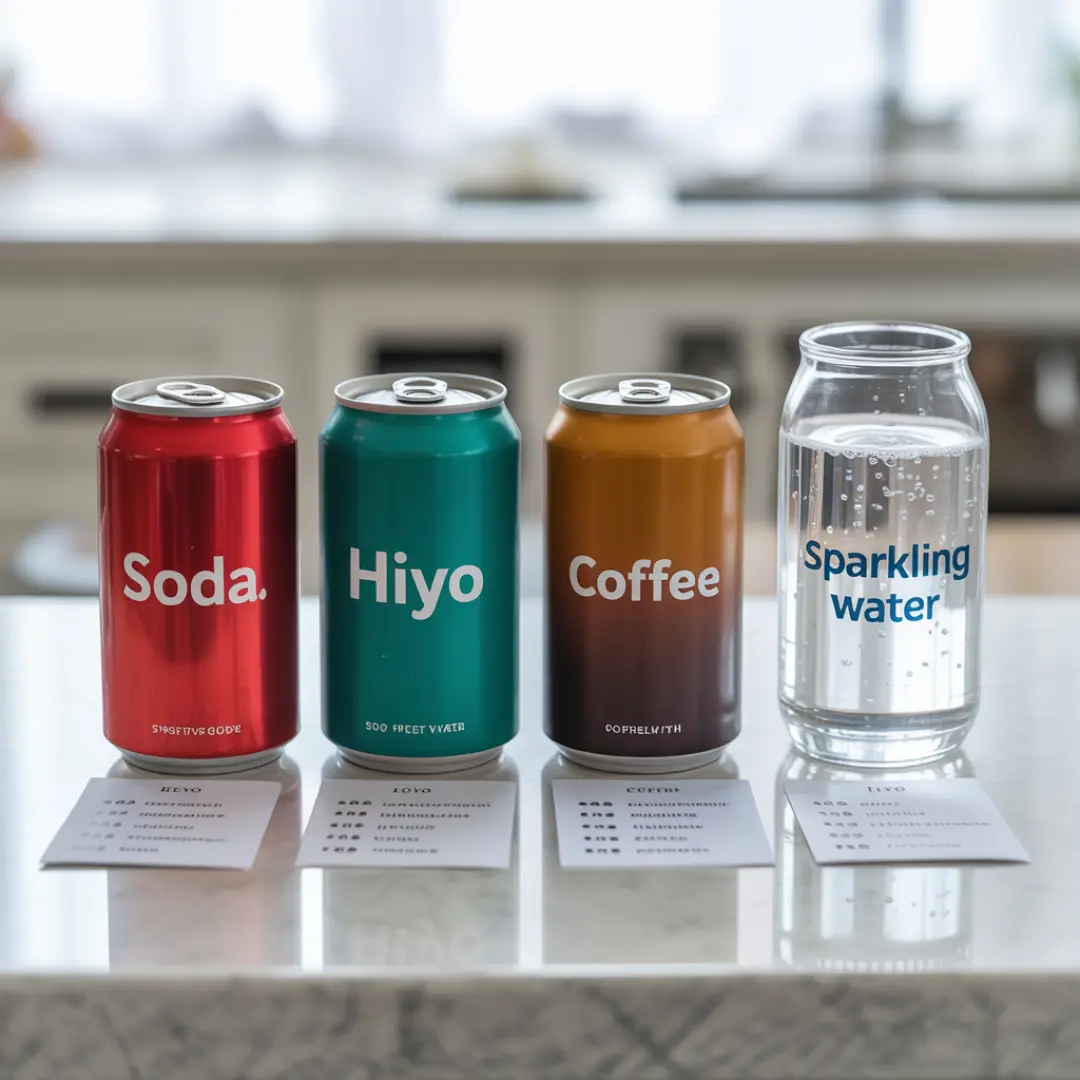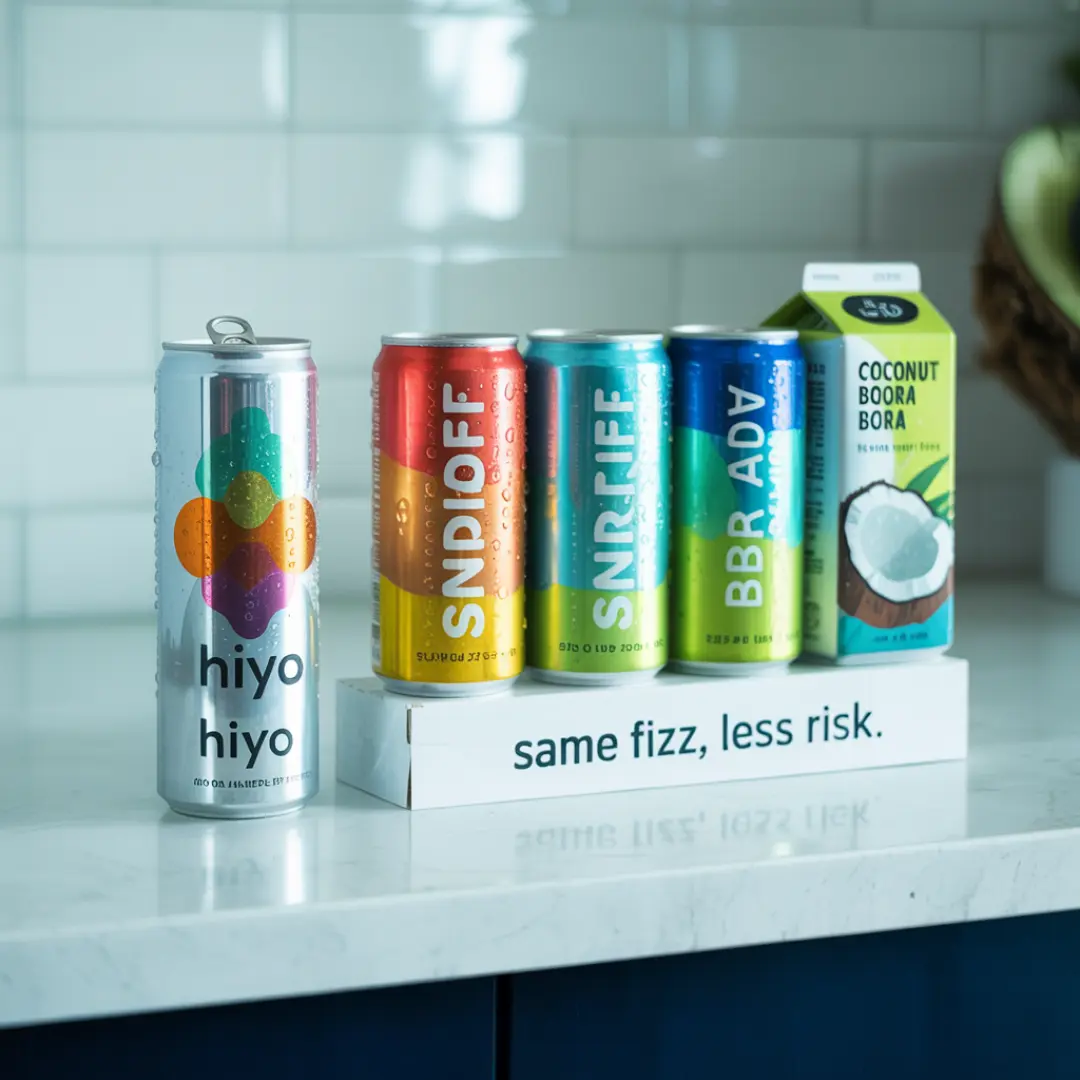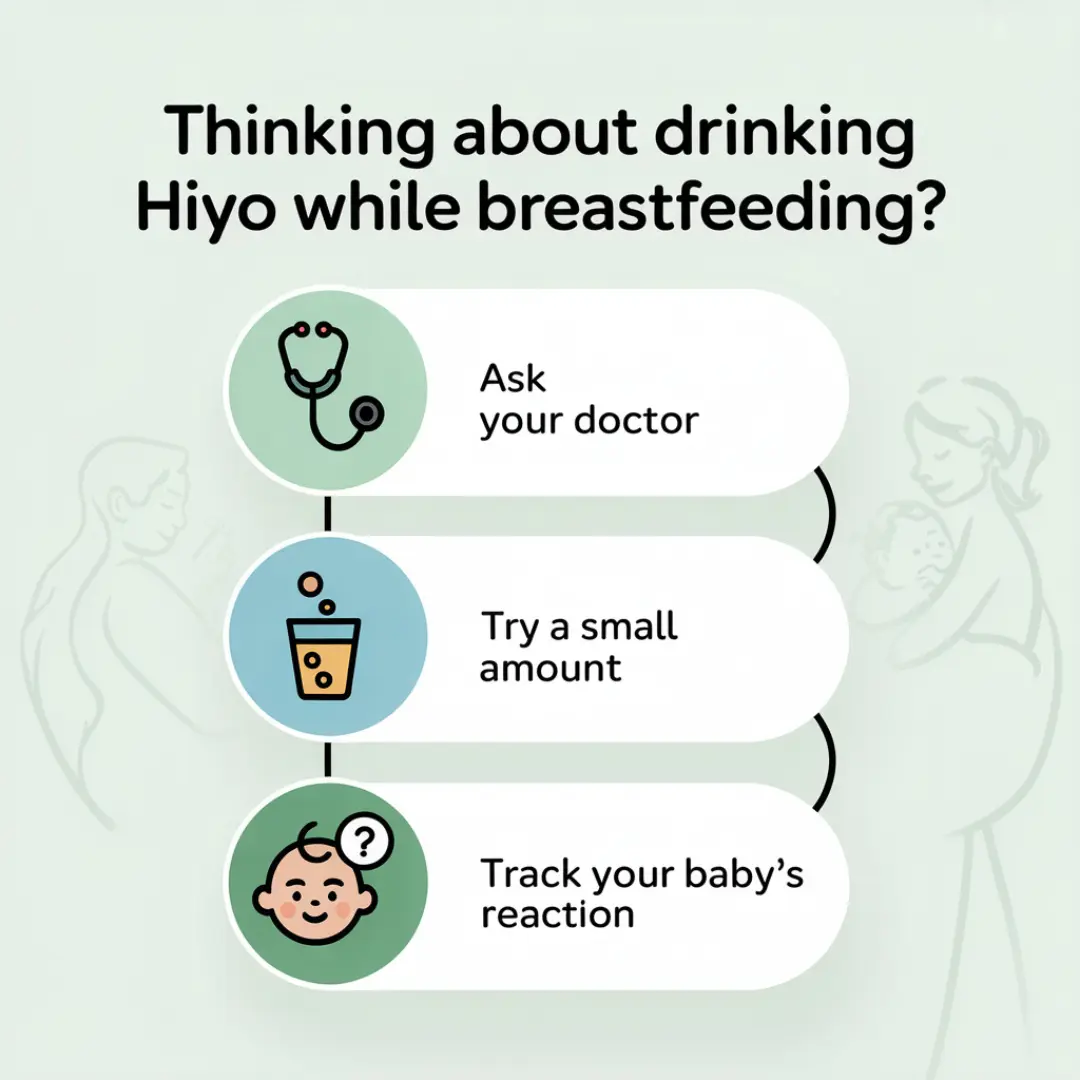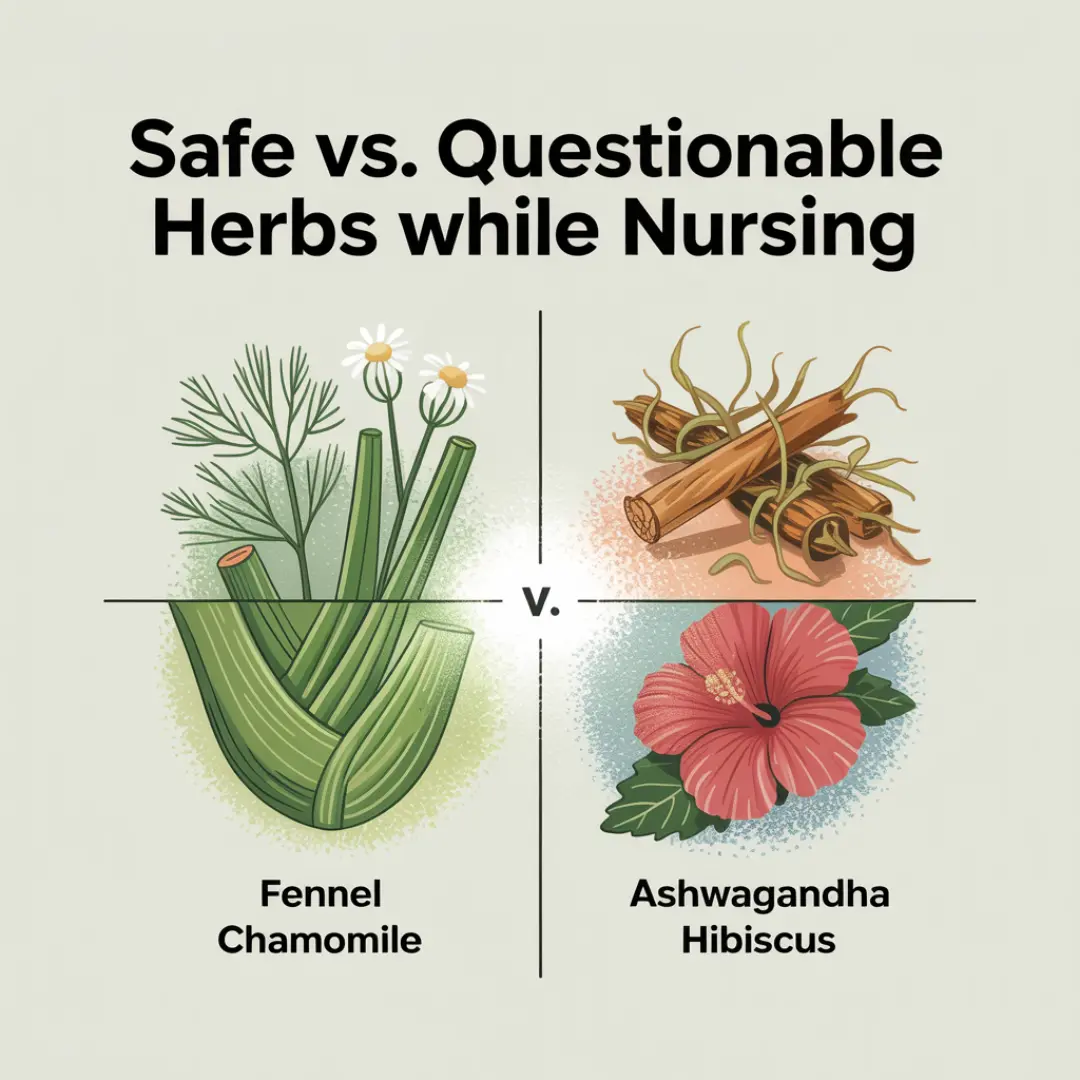You can drink Hiyo while breastfeeding, but there’s no medical guarantee it’s safe. Some ingredients—like ashwagandha and lion’s mane—haven’t been fully tested for breastfeeding safety. Until then, it’s smarter to avoid drinks with adaptogens or talk to your doctor first.
You’re nursing, tired, and craving something that feels adult without alcohol. Hiyo looks like the perfect fix. It’s non alcoholic. It’s marketed as a mood-lifter. But the question nags—Can you drink Hiyo while breastfeeding?
Let’s get to it.
Real moms are asking:
Can I drink Hiyo while breastfeeding? Reddit says yes, but what about science?
Can you drink hibiscus while breastfeeding, or is that risky too?
Can you drink Calm while breastfeeding, or is it the same issue as Hiyo?
How many drinks can you have while nursing—Hiyo or otherwise?
People tend to assume that if it doesn’t contain alcohol, it’s fine. But here’s the thing—“non alcoholic” doesn’t mean “herb-free.” And many herbs, even in small doses, can pass through breast milk.
That’s where Hiyo falls into a grey area. It’s packed with adaptogens and botanicals designed to relax your brain. Nice idea. But your baby gets a sip of everything you do—literally.
So, if you’re wondering, can you not drink when breastfeeding? The answer depends on what you’re drinking.

Is It Breastfeeding-Safe?
| Hiyo Ingredient | Breastfeeding Safety |
|---|---|
| Ashwagandha | Not well-studied |
| Lion’s Mane | Unknown |
| Hibiscus | Possibly risky |
| L-Theanine | Possibly safe |
Source: National Institutes of Health (NIH) + LactMed database
What Is Hiyo Drink Made Of?
Key Ingredients in Hiyo
Hiyo is a non-alcoholic social tonic made with adaptogens, fruit extracts, and sparkling water—designed to calm the mind without the buzz.
Here’s what’s inside a typical can:
Adaptogens like ashwagandha, lion’s mane, and L-theanine
Botanicals such as ginger, hibiscus, lemon balm, and turmeric
Fruit juices and natural flavorings for sweetness
Carbonated water to give it that crisp, refreshing feel
The goal? A drink that promotes calm, focus, and mood balance. But if you’re breastfeeding, each of these ingredients matters more than the vibe it promises.
Why Ingredients Matter While Nursing
Herbs and adaptogens don’t just interact with you—they may affect your baby through your breast milk.
Adaptogens like ashwagandha are meant to regulate stress and hormone responses. But they haven’t been tested enough on breastfeeding mothers. This is a red flag, not a green light.
Lion’s mane is a nootropic believed to support brain function, but its safety during lactation? Still unknown.
Hibiscus may look harmless, but it can alter hormone levels and blood pressure—two things new moms shouldn’t gamble with.
Even fruit extracts and “natural flavors” can be vague. The FDA doesn’t require brands to list every plant compound, especially in proprietary blends.
Ingredient Comparison Chart:
Add a table titled “Hiyo Ingredients: What’s Safe While Breastfeeding?” showing amount per can, daily safe limits, and breastfeeding safety levels for key herbs. This helps readers understand how much of each compound they’re consuming and what’s known (or not) about its safety.
| Ingredient | Amount per Can | Daily Safe Limit (if known) | Breastfeeding Safety |
|---|---|---|---|
| Ashwagandha | ~125 mg | Unknown for lactating women | Not well-studied |
| Lion’s Mane | ~200 mg | No established limit | Unknown |
| L-Theanine | ~100 mg | 200–400 mg/day (general adult range) | Possibly safe |
| Hibiscus | Trace–Moderate | No official limit | Possibly risky |
Sources: Hiyo website, NIH, LactMed, Mayo Clinic
Quick Tip Box:
“Read every label like your baby’s health depends on it—because it does.”
Is Hiyo Safe for Breastfeeding Mothers?
There’s no official green light yet. Some Hiyo ingredients haven’t been fully tested for safety in breastfeeding, so it’s best to be cautious or speak with a doctor first.
Most nursing moms assume if something’s non-alcoholic and labeled “natural,” it’s safe. Hiyo falls into that space. It’s plant-based, marketed for relaxation, and alcohol-free. But here’s the catch—herbal doesn’t equal harmless.
The issue isn’t Hiyo itself—it’s what’s inside it. Some of the adaptogens and botanicals used in Hiyo haven’t been studied in breastfeeding women. In some cases, we just don’t know how they affect lactation, breast milk composition, or your baby’s digestion.
What Doctors and Lactation Consultants Say
Breastfeeding experts are typically cautious, and for good reason.
Herbs like ashwagandha, hibiscus, and lion’s mane have potential effects on hormones, stress levels, and even breast milk. But the problem is the lack of consistent testing in nursing moms. Most data comes from animal studies or general adult trials, not from postpartum women feeding newborns.
Expert Insight:
The American Academy of Pediatrics (AAP) recommends avoiding certain herbs unless advised by a healthcare provider. The La Leche League echoes this approach, often reminding moms that “natural” doesn’t always mean baby-safe.
The safety of many herbal supplements has not been evaluated during lactation. It’s best to consult a professional before consuming herbal blends.
— La Leche League International
You can also reference the NIH’s LactMed database, which provides detailed information on how various substances—herbs included—transfer into breast milk and affect nursing infants.
Source: La Leche League & NIH LactMed Database
Why “Natural” Doesn’t Always Mean “Safe”
Ashwagandha may affect thyroid hormones and stress response.
- There is evidence that hibiscus can lower blood pressure and alter estrogen activity.
Lion’s Mane has no confirmed data on breastfeeding safety.
L-theanine is likely mild, but long-term exposure via milk hasn’t been studied.
Some herbs may reduce milk supply. Others might change the flavor of breast milk or cause digestive issues for the baby. That’s why blanket statements like “It’s just herbs—it’s fine” don’t hold up in medical circles.
Real-Life Tip Box:
If it hasn’t been studied, it’s not safe by default.
Don’t assume safety just because something is sold over-the-counter or looks like tea. The FDA doesn’t regulate herbal drinks the same way it regulates meds.
Real Moms Ask — Common Questions Answered
Can Hiyo Affect My Breast Milk?
Yes, certain herbs in Hiyo may affect milk supply, taste, or hormone levels, though there’s no confirmed research specific to nursing mothers. It’s smart to watch how your body responds and monitor any changes in your baby.
Here’s the thing—adaptogens like ashwagandha and lion’s mane are designed to help your body handle stress. Sounds useful during postpartum, right? Maybe. But adaptogens work by influencing hormones, and anything that touches your hormones can impact your milk.
Milk supply: Some herbs in adaptogenic drinks have been linked to reduced lactation. Others may have no effect.
Taste: Strong herbal profiles can slightly alter the taste of your breast milk. Some babies notice, others don’t.
Mood/hormone impact: Herbs that affect cortisol or serotonin could indirectly influence your body’s lactation response.
If your baby suddenly becomes fussy, gassy, or disinterested after you drink Hiyo, it could be linked. Or it could be a coincidence. But it’s worth noting.
What If I Already Drank Hiyo While Nursing?
No need to panic. Hiyo isn’t toxic, but it’s wise to track how your baby reacts over the next 12–24 hours.
Plenty of moms online have had a Hiyo before realizing what’s in it. One isn’t likely to cause any serious issues. The main thing is to stay alert:
Watch for gas, fussiness, or poor sleep
Note changes in milk supply or letdown
Stay hydrated and eat well to support your system
You don’t need to stress or call poison control. But if anything feels off, make a note of it and call your pediatrician. Every baby’s sensitivity is different.
Is It Safer Than Energy Drinks or Soda?
Hiyo is non-alcoholic and has no caffeine, which makes it safer in some ways, but the herbs bring in a different kind of concern.
Let’s line it up side-by-side:
| Drink | Caffeine | Sugar (per can) | Herbs/Adaptogens | Breastfeeding Risk Level |
|---|---|---|---|---|
| Hiyo | 0 mg | 4–6 grams | Ashwagandha, L-theanine, Lion’s Mane | Use caution |
| Soda (Cola) | ~34 mg | 39 grams | None | High sugar, mild risk |
| Energy Drink | ~80–160 mg | 27–54 grams | Sometimes (like ginseng) | High risk |
| Sparkling Water | 0 mg | 0 grams | None | Generally safe |
Hiyo beats soda and energy drinks on sugar and caffeine. But the adaptogens still raise questions.
Important Note: Add a 4-column comparison chart titled “How Safe Is Your Drink While Breastfeeding?” featuring Hiyo, soda, energy drinks, and sparkling water. Use color coding—green for low risk, yellow for caution, red for avoid. Include columns for caffeine, sugar, herbs, and safety level.
Sources: Hiyo website, USDA, Mayo Clinic.

Quick Tip:
Think of Hiyo like herbal tea in a can. Some teas are fine. Others? Not so much. Always know what’s inside.
What Experts Recommend Instead
Herbal-Free Sparkling Alternatives
If you’re breastfeeding and want to skip the adaptogens, there are plenty of bubbly, herb-free drinks that offer the same refreshing feel, minus the question marks.
Not every mood-boosting drink needs to come with a disclaimer. A few brands deliver calm and flavor without using herbs that could mess with your milk or your baby’s tummy. Look for these features:
No adaptogens
No caffeine
Low sugar
Clear labeling
Brands to consider:
Aura Bora (select flavors) – Clean ingredients, no herbs
Spindrift – Real fruit, sparkling water, no additives
OLIPOP (Classic Grape, Orange Squeeze) – Prebiotic sodas with clear labels
Check for herbal content in Sound Sparkling Tea (Chamomile-free versions)
These drinks feel like Hiyo without the guesswork. They don’t promise mood shifts, but they don’t raise red flags either.
Non-Herbal Hydration for New Moms
Coconut water, lemon water, and basic electrolyte drinks are safe, nourishing, and baby-friendly.
Forget the fancy cans for a second—hydration matters more than hype when you’re nursing. Some no-fuss options your body will thank you for:
Coconut water – Replenishes potassium and fluids
Lemon-infused water – Mild flavor, easy on digestion
Electrolyte drinks – Look for sugar-free, dye-free kinds (like Liquid I.V. Hydration Multiplier in moderation)
You’re feeding two people. What you drink fuels that. Herbal-free hydration keeps it simple and stress-free.

Cost Comparison Table
| Drink | Price (Per Can) | Herbs/Adaptogens | Breastfeeding Safe? |
|---|---|---|---|
| Hiyo | $4.00 – $5.00 | Yes | Caution |
| Spindrift | $1.25 – $1.75 | No | Yes |
| Aura Bora | $1.50 – $2.00 | No (some flavors) | Yes |
| Coconut Water (VitaCoco) | $1.00 – $2.00 | No | Yes |
| OLIPOP | $2.50 – $3.00 | No | Yes |
When Is It Okay to Try Hiyo Again?
After Weaning or Doctor Approval
The safest time to try Hiyo again is after weaning, or if your doctor gives you the okay during breastfeeding.
If your baby’s fully weaned, you’re free to go back to sipping your favorite adaptogenic drinks. But if you’re still nursing, even just part-time, it’s worth checking in with a healthcare provider before popping open a can.
Doctors may give the green light if:
Your baby is older than 6–12 months
You’re nursing less frequently
You have no known supply issues
Your baby doesn’t have sensitivities
Even then, timing matters. For example:
Nursing right after drinking Hiyo is higher-risk
Waiting 2–3 hours post-drink reduces what transfers into milk
Also, watch your baby closely after reintroducing any new food or drink.
Start Slow and Track Effects
Begin with half a can. Wait 24 hours. Note any changes in your baby or your body.
This isn’t just a drink—it’s a test. Every baby reacts differently. What’s fine for one may not sit well with another.
Here’s how to stay safe:
Start slow – Half a serving only
Wait and observe – Is the baby more fussy, gassy, or not sleeping well?
Journal the response – Track symptoms, feeding behavior, and milk flow
If there’s no reaction, you can increase slightly—but there’s no need to rush.
Title: “Thinking About Drinking Hiyo While Breastfeeding?”

Step 1: Ask your doctor
Step 2: Try a small amount
Step 3: Track your baby’s reaction
Bonus Tip: Skip feeding for 2–3 hours after sipping if you want extra safety.
Final Thoughts: Play It Safe
When in Doubt, Ask a Professional
If you’re unsure, always check with your doctor. Even herbal drinks can affect your baby while you are breastfeeding. Playing it safe is the smart call.
No drink is worth guessing when it comes to your baby’s health. Whether it’s Hiyo or anything labeled “natural,” the rules change when you’re nursing. What helps calm your mood could upset your baby’s tummy—or worse, affect your milk supply.
Every mom’s body is different. Every baby reacts in their own way. That’s why professional advice beats a product label or a Reddit thread every time.
Your OB, pediatrician, or a certified lactation consultant can break it down:
What’s okay later
What to avoid entirely
If they say wait—wait. If they say try half a can and track it, go for it. But don’t decide based on vibes. Decide with facts.
Short Tip Box:
Always read labels. ‘Natural’ doesn’t mean ‘nursing-safe’.
Some of the strongest compounds in nature come from plants. That doesn’t make them harmless.
Related Topics You Might Like
Is Hiyo Safe During Pregnancy?
Pregnancy brings its list of ingredients to avoid. Many herbs used in adaptogenic drinks can influence hormones, uterine activity, and blood pressure. Check what Hiyo contains before sipping.
Best Non-Alcoholic Drinks for Postpartum Moms
Looking to unwind without risking your milk? There are plenty of fizzy, functional drinks without herbs or hidden risks. We list the safest picks that hydrate and support new moms.
What Herbs to Avoid While Breastfeeding
Not all teas or tonics are created equal. Learn which herbal ingredients may reduce milk supply, cause drowsiness in infants, or irritate digestion. Get the full “no-go” list here.


